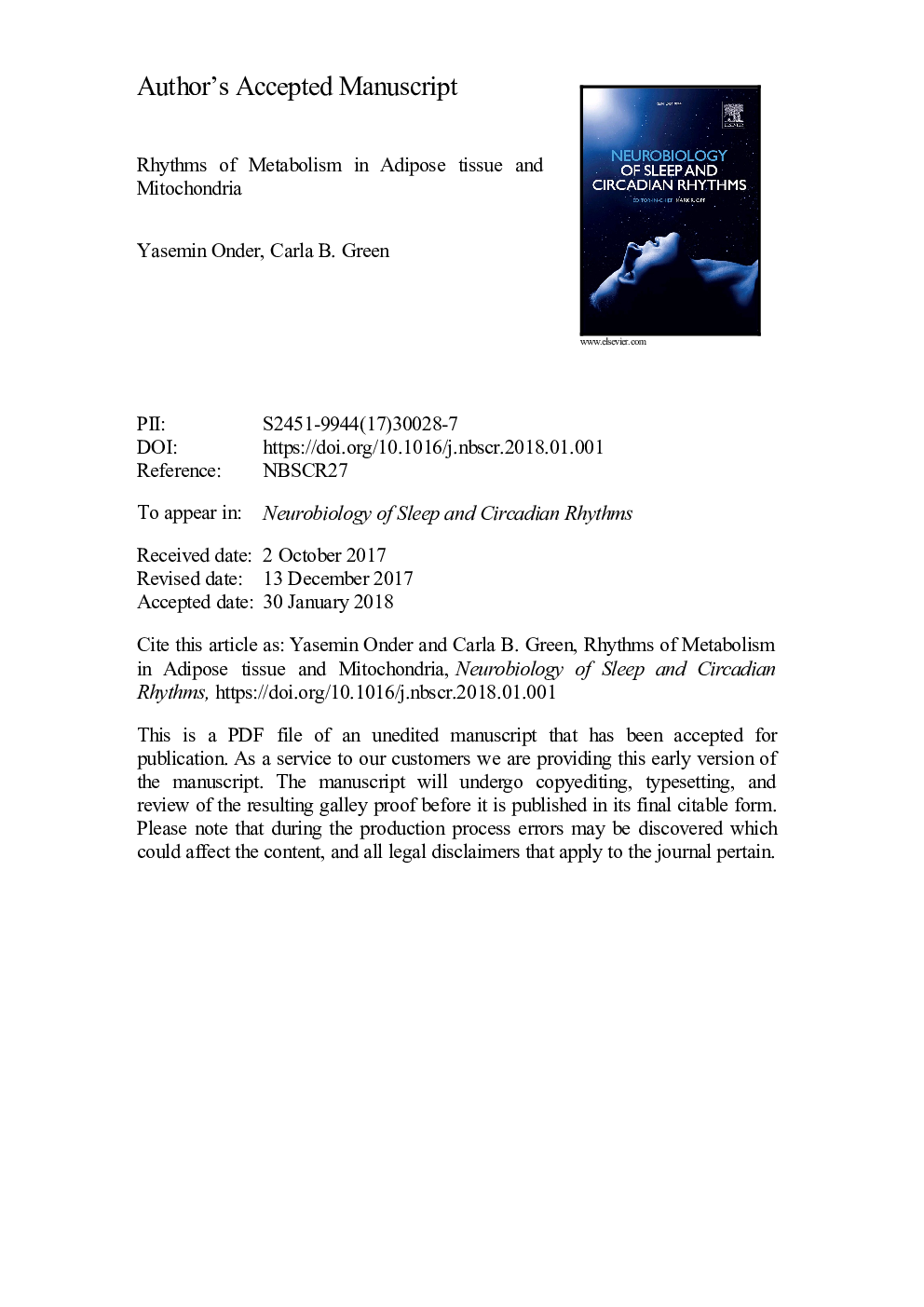| Article ID | Journal | Published Year | Pages | File Type |
|---|---|---|---|---|
| 8838708 | Neurobiology of Sleep and Circadian Rhythms | 2018 | 20 Pages |
Abstract
Circadian clocks synchronize the daily functions of organisms with environmental cues like light-dark cycles and feeding rhythms. The master clock in the suprachiasmatic nucleus in the hypothalamus of the brain and the many clocks in the periphery are organized in a hierarchical manner; the master clock synchronizes the peripheral clocks, and the peripheral clocks provide feedback to the master clock in return. Not surprisingly, it has been shown that circadian rhythms and metabolism are closely linked. Metabolic disorders like obesity have a large cost to the individual and society and they are marked by adipose tissue and mitochondrial dysfunction. Mitochondria are central to energy metabolism and have key functions in processes like ATP production, oxidative phosphorylation, reactive oxygen species production and Ca2+ homeostasis. Mitochondria also play an important role in adipose tissue homeostasis and remodeling. Despite the extensive research investigating the link between circadian clock and metabolism, the circadian regulation of adipose tissue and mitochondria has mostly been unexplored until recently, and the emerging data in this topic are the focus of this review.
Related Topics
Life Sciences
Neuroscience
Behavioral Neuroscience
Authors
Yasemin Onder, Carla B. Green,
